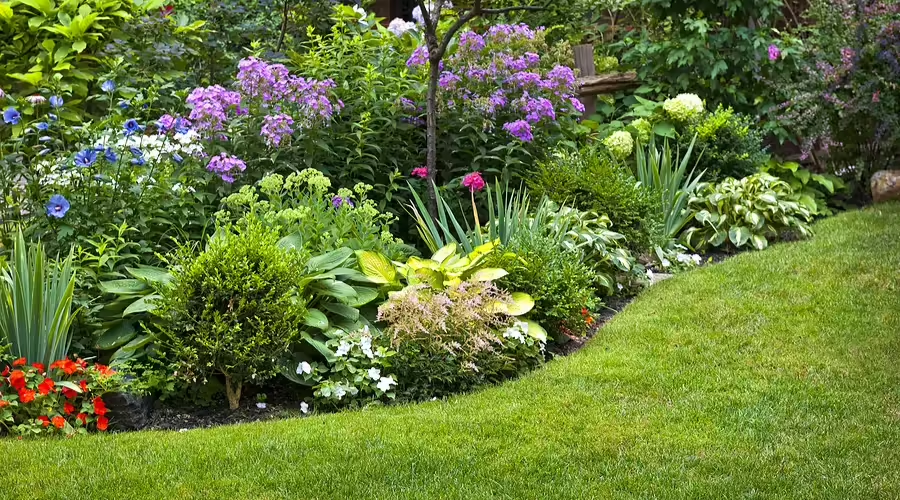Transforming a Suburban Backyard into a Sustainable Oasis
From High-Maintenance to High-Impact
The typical suburban backyard – sprawling lawn, symmetrical hedges, perhaps a concrete patio – may look familiar, but beneath its polished surface lies a costly and resource-hungry system. Maintaining all that turf demands constant mowing, heavy irrigation, chemical fertilizers, and frequent replanting. The result? A high-maintenance, high-cost landscape that offers little in return to the environment or homeowner.
But a quiet revolution is underway.
Across Northern Virginia and beyond, homeowners are reimagining their outdoor spaces as sustainable oases – lush, eco-friendly backyards that work with nature, not against it. These landscapes replace synthetic perfection with regenerative beauty. They are designed to conserve water, support biodiversity, reduce upkeep, and reflect a deeper set of values: environmental stewardship, long-term investment, and personal well-being.
At Brian Daly Designs, we believe sustainability and style go hand in hand. A thoughtfully transformed backyard doesn’t just reduce your water bill – it becomes a sanctuary. This blog will walk you through the philosophy, process, and practical strategies of sustainable landscape design, anchored by real-world results. If you’ve ever wondered how to create a sustainable backyard or what native plant landscaping can really offer, you’re in the right place.
The Design Mindset Shift: Building with Nature, Not Against It
Creating a sustainable backyard starts with more than just swapping plants – it begins with changing how we think about landscape design altogether. For decades, suburban yards have been treated like outdoor décor: something to be maintained, trimmed, and treated into submission. But truly sustainable landscaping reframes the backyard as a living system – one that functions, evolves, and thrives when designed in harmony with its environment.
Instead of imposing an artificial aesthetic (like the always-green, always-thirsty lawn), sustainable design embraces the unique rhythms of a site. The sun and shade patterns. The slope of the land. The natural soil composition. All of these factors are treated not as obstacles, but as guides. The result is a backyard that doesn’t fight its surroundings – it flows with them.
At the heart of this mindset is a principle that Brian Daly Designs follows with every project: right plant, right place. This deceptively simple rule unlocks a cascade of sustainable benefits. By choosing plants suited to the exact conditions of a site – whether sun-drenched and dry or shaded and moist – you minimize water usage, reduce the need for chemicals, and eliminate the frustration of constant replanting. Over time, the space becomes more self-sustaining and far less demanding.
Reframing the Backyard as an Ecosystem
One of the most important shifts in thinking is moving away from “designing a yard” to “designing a functioning ecosystem.” That means looking beyond surface-level beauty and considering how every element – from soil structure to water flow – interacts over time.
Sustainable design begins with observation: What thrives naturally in your environment? What patterns already exist on your site? Once those factors are understood, we can begin layering in plantings and materials that complement them instead of competing with them. The result is a space that looks and feels organic because it is.
Sustainability Is in the Details: Design Principles That Matter
Small decisions make a big impact when applied consistently. Sustainable landscapes tend to follow a set of core design principles that help turn philosophy into action:
- Water is managed, not wasted – with drip irrigation, rainwater harvesting, and permeable surfaces that help replenish groundwater instead of generating runoff.
- Soil is built, not bought – by feeding it with compost, mulch, and natural amendments that foster microbial health and reduce erosion.
- Plants are selected for performance – including native species that require less intervention and offer more ecological value per square foot than exotic ornamentals.
Together, these strategies create a resilient system that gets stronger, not weaker, over time.
Beauty That Grows Smarter, Not Harder
At Brian Daly Designs, we see sustainable landscaping not as a compromise, but as an upgrade. These are not “wild” gardens left to chance. They are intelligent, intentional designs that mirror the elegance of natural systems while supporting modern life.
When designed correctly, a sustainable backyard is:
- More beautiful season after season
- Easier to maintain as plants establish
- More rewarding to spend time in, knowing it benefits your family, your property value, and the planet
This isn’t a trend – it’s a smarter way to live outdoors.
Real-Life Results: A Sustainable Transformation in Action
The true test of sustainable landscaping isn’t in the concept – it’s in the outcome. What happens when a tired, traditional yard is reimagined with sustainability at the core? At Brian Daly Designs, we’ve helped homeowners across Northern Virginia turn outdated outdoor spaces into thriving, low-maintenance ecosystems. The result is more than a visual upgrade – it’s a complete rethinking of how space, water, and natural beauty coexist.
Here’s a snapshot of what that transformation can look like.
Before – A Costly, Underperforming Yard
Like many suburban homes, backyard share a familiar story: a wide expanse of turf grass that require constant mowing, irrigation, and chemical treatments just to stay presentable. The lawn browns every summer, and drainage issues leave portions of the yard soggy after every storm. There are no defined zones for relaxation, no shade or seating areas, and little appeal for pollinators or birds.
From a cost standpoint, it’s an ongoing burden – between water bills, weekly maintenance, and repeated replanting, the yard gives little in return.
The Transformation – Strategic Design Meets Ecological Intelligence
Working closely with homeowners, we develop a phased master plan centered on sustainability, usability, and aesthetic flow. Every design decision is informed by site analysis – light patterns, soil type, drainage behavior – ensuring that solutions are tailored, not templated.
Key features of the transformation include:
- Lawn removal and replacement with a layered mix of native perennials, ornamental grasses, and drought-tolerant groundcovers to reduce water use and support biodiversity.
- Permeable pavers to form a new patio and pathway system that manages stormwater instead of contributing to runoff.
- Smart irrigation with drip systems and rain barrels, dramatically reducing water usage and simplifying upkeep.
- Defined zones for dining, play, and relaxation, using natural materials and visual cues like stone edges and plant groupings.
The revised layout introduces not just beauty, but function: a shaded seating nook for morning coffee, a pollinator-friendly meadow that hums with life, and a cozy fire pit area for evenings with friends.
After – A Living, Breathing Backyard That Gives Back
At this point, that same backyard tells a completely different story. Water bills are down significantly, and maintenance time has dropped by over 20 hours per year. Where weeds once crept in, now there’s seasonal color, texture, and life. Birds frequent the native berry-producing shrubs. Bees and butterflies flit through the garden’s succession of blooms. And the homeowners have discovered an unexpected benefit: the yard draws them outside more often, turning routine evenings into restorative outdoor experiences.
What was once a labor-intensive patch of grass is now a sustainable oasis – beautiful, resilient, and alive.
This is just one example of how eco-friendly backyard ideas, when thoughtfully executed, can yield both immediate impact and long-term value. It’s not just a before and after – it’s a transformation that pays dividends in wellness, cost savings, and environmental return.
Going Native: Why Virginia Plants Make All the Difference
For homeowners seeking a sustainable landscape that’s both beautiful and low-maintenance, there’s one strategy that delivers on every level: native planting. In Virginia, where summers can be hot and humid and winters unpredictable, native species offer a natural advantage. These plants have spent thousands of years adapting to the local climate, soil, and wildlife – making them perfectly suited for long-term success without excessive inputs.
Native plant landscaping isn’t just about sustainability. It’s about creating a vibrant, place-specific garden that feels alive with motion, color, and meaning – and that gets better with every passing season.
Native Plants Thrive Where Others Struggle
When you choose native plants, you’re choosing a landscape that’s built to last. Unlike many exotic ornamentals, Virginia natives have evolved alongside local rainfall patterns, pests, and soil types. This makes them inherently more resilient – and far less reliant on irrigation, synthetic fertilizers, or chemical interventions.
Take Virginia Sweetspire (Itea virginica) for example: this versatile shrub offers fragrant white blooms in summer and brilliant red-purple foliage in fall – all while thriving in moist soil and providing critical food for pollinators.
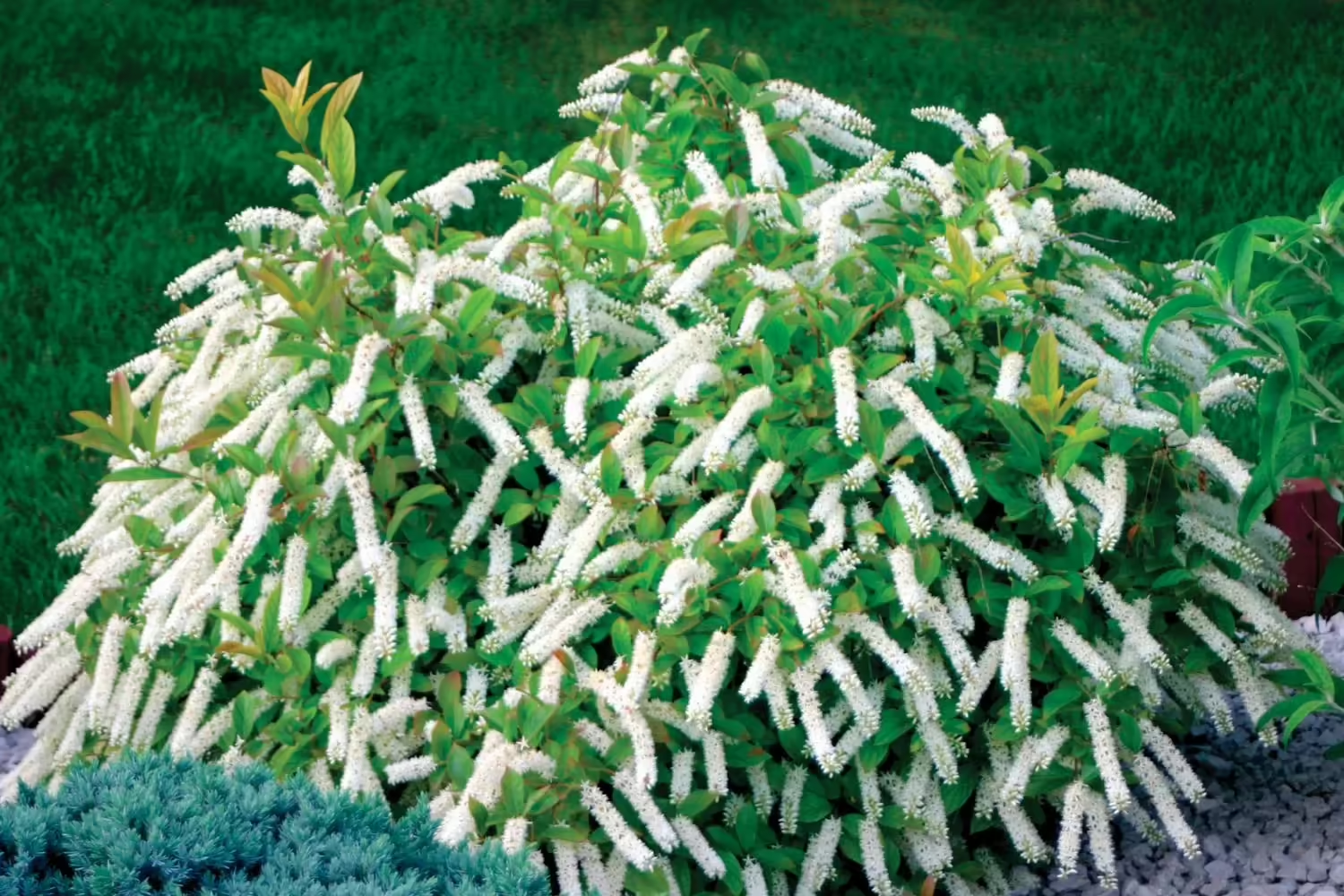
Or consider Purple Coneflower (Echinacea purpurea), a drought-tolerant perennial that supports butterflies, bees, and birds with minimal effort.
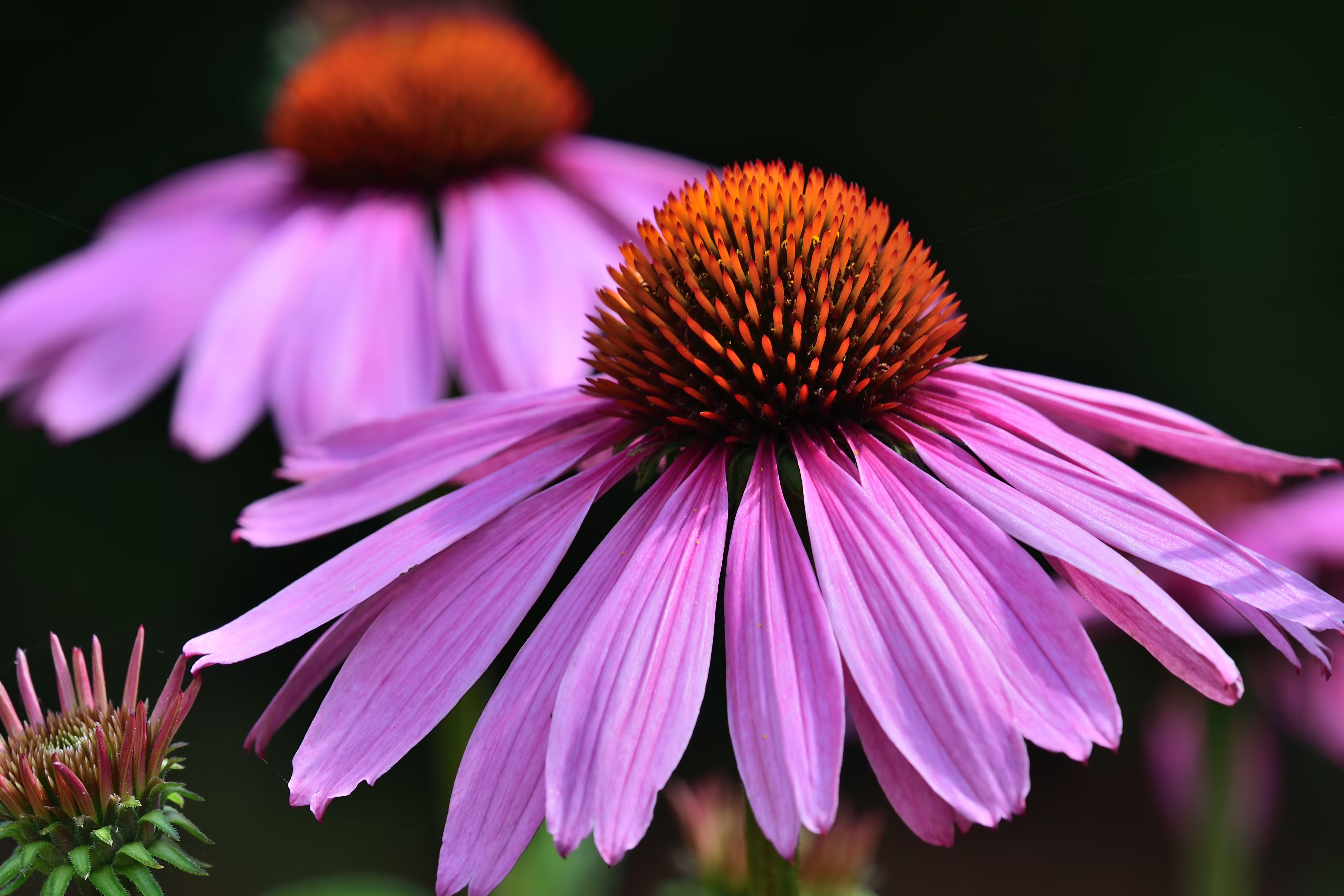
Native plants also develop deeper root systems, improving drainage and soil structure over time. In essence, the longer they’re in your yard, the harder they work for you.
Biodiversity Begins at Home
Traditional landscaping often creates what ecologists call a “green desert” – lots of lawn, few species, and very little habitat for wildlife. Native plant landscapes turn that model on its head.
By selecting a mix of native trees, shrubs, grasses, and perennials, you create an ecosystem that feeds local life at every level. Birds find berries and shelter. Bees and butterflies locate critical nectar sources. Even fireflies and frogs return to yards where chemical use is low and plant variety is high.
One powerful example: the Monarch butterfly. Its larvae can only feed on milkweed species like Asclepias tuberosa, a native wildflower perfectly suited for Virginia’s climate. Without native plants like these, entire species struggle to survive.
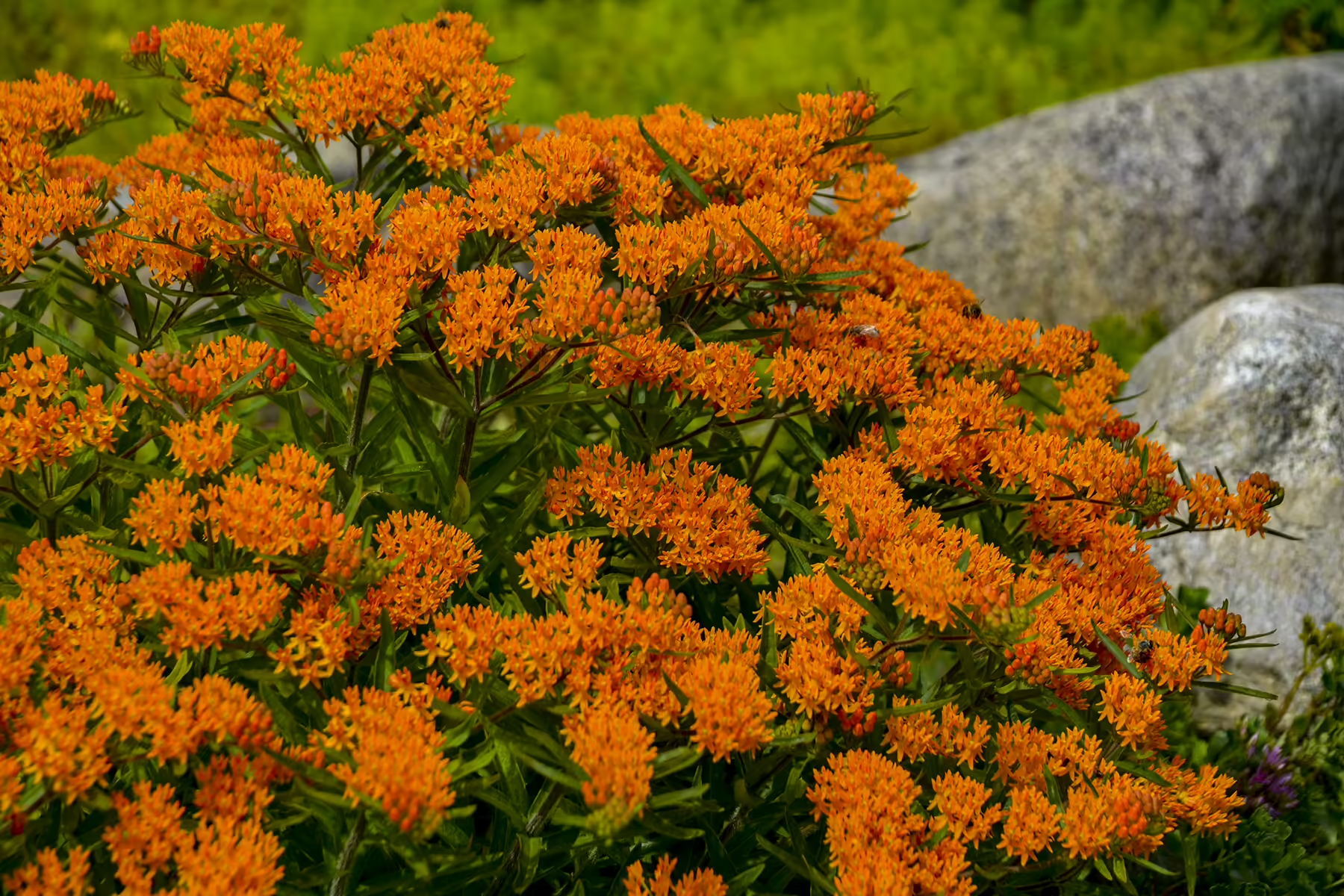
At Brian Daly Designs, we often use a “habitat layering” approach, combining canopy trees, mid-story shrubs, and diverse groundcovers to build structural beauty and ecological benefit into every design.
A Distinctly Virginian Sense of Place
One of the most overlooked benefits of native landscaping is emotional: it makes a yard feel rooted in its region. The sight of blooming Dogwood in spring, the spicy scent of American Bayberry in fall, the flutter of Swallowtail butterflies on Joe-Pye Weed – these are experiences that tie us to where we live.
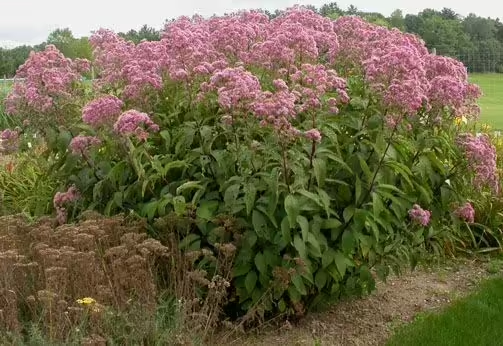
Using native plants allows homeowners to create landscapes that are authentic to the local environment – not a replica of some distant ideal. It also ensures that what thrives in your yard today will still thrive ten years from now, with minimal input and maximum payoff.
To support this approach, Virginia offers outstanding resources like the Plant NOVA Natives campaign and the Virginia Native Plant Society, both of which provide curated plant lists, design tips, and region-specific guidance.
By embracing native plant landscaping, homeowners not only reduce water use and maintenance but also contribute to something larger – the restoration of local ecosystems, the return of pollinators, and the preservation of Virginia’s natural beauty. With Brian Daly Designs guiding the process, native planting becomes not just practical, but personal.
Designing for Sustainability Without Sacrificing Style
One of the most persistent myths about sustainable landscaping is that it means sacrificing design. That a low-water, low-maintenance yard must look wild, sparse, or second-rate. But the truth is: when done right, sustainable design is some of the most compelling, elegant, and functional work in the industry.
At Brian Daly Designs, sustainability is not a constraint – it’s a creative engine. It’s what allows us to craft backyards that are not only better for the environment, but also more visually cohesive, livable, and luxurious. The key lies in how the pieces fit together.
Every Element Has a Purpose – and a Payoff
Sustainable landscapes are defined by intentionality. Every material, plant, and layout decision serves both form and function.
- Permeable pavers don’t just look refined – they reduce runoff and recharge groundwater.
- Native ornamental grasses create architectural interest and require no mowing.
- Strategically placed deciduous trees offer dappled shade in summer and let winter light through, reducing energy bills.
- Reclaimed stone or recycled materials bring warmth, history, and environmental credibility to patios and walls.
Even elements like low-voltage LED lighting or rain chains become design features when sustainability is baked into the concept, not treated as an afterthought.
Outdoor Living That Aligns with Modern Lifestyles
Today’s homeowners want more than pretty plantings – they want outdoor rooms that support real life. Sustainable design makes those spaces more usable and enjoyable all year long.
A shaded seating area, framed with pollinator-friendly beds and cooled by the breeze through tall grasses, becomes a favorite retreat. A dining patio with permeable pavers and soft lighting becomes an extension of the home. A small fire pit nook, surrounded by native shrubs and stone benches, invites gatherings that feel both grounded and elevated.
Unlike conventional yards that require constant maintenance to stay presentable, these spaces improve with time. The plants establish, the system stabilizes, and the homeowner reaps the reward: more time living outdoors, less time working on it.
The BDD Touch – Where Ecology Meets Elegance
At Brian Daly Designs, we don’t believe in trade-offs between sustainability and aesthetics – we believe in synergy. Our approach blends timeless design principles with the latest sustainable strategies, ensuring that every yard feels curated, comfortable, and connected to its place.
We work with:
- Subtle layering of textures, colors, and seasonal interest
- Defined borders that make even wild plantings feel intentional
- Site-specific layouts that guide water, capture breezes, and create moments of pause
The result is a landscape that looks effortless – but is grounded in deep ecological thinking and design expertise. One that feels like it belongs to your home, your region, and your lifestyle.
Beauty That Gives Back – One Backyard at a Time
Transforming your backyard into a sustainable oasis isn’t just about saving water or planting natives – it’s about reimagining what your outdoor space can do. It can become a low-maintenance sanctuary that grows more beautiful each year. A vibrant ecosystem that supports pollinators and birds. A gathering space for friends and family. A reflection of your values and your vision.
At Brian Daly Designs, we help clients turn that vision into reality. Whether you’re looking for a full backyard overhaul or starting small with a native plant palette and smarter irrigation, our team brings the expertise, creativity, and ecological insight to design landscapes that are both stunning and sustainable.
Ready to bring new life to your outdoor space?
Let’s build a backyard that works for you – and with nature. Contact Brian Daly Designs today to schedule your personalized consultation and take the first step toward your own sustainable transformation.




